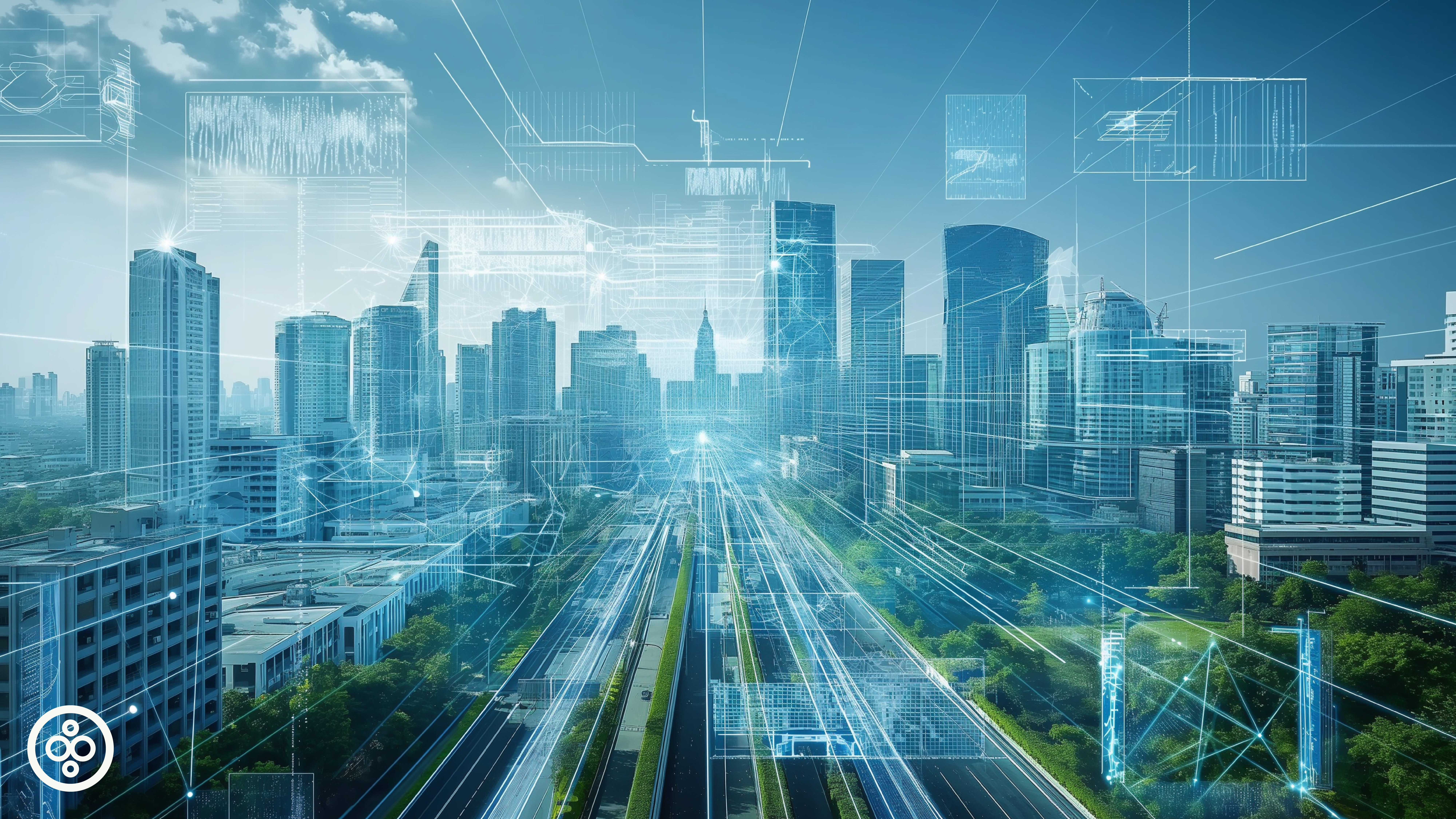The integration of artificial intelligence can enhance efficiency and innovation in the AEC industry's tech stacks and workflows. From ensuring safety on bustling construction sites to optimizing design processes and enhancing sustainability efforts, AI is revolutionizing many facets of the AEC landscape. Through advanced algorithms and real-time monitoring, AI-powered solutions ultimately foster safer, more sustainable, and more productive construction practices. This article highlights five of the most common use cases for AI that we’ve identified within the AEC industry.
1. Safety
AI-powered cameras and sensors provide real-time safety monitoring on construction sites. These systems can automatically detect potential hazards through advanced image recognition and sensor analysis. In case of any hazard detection, the systems immediately alert relevant personnel like site managers or safety officers via mobile or on-site displays. The data collected by these AI systems enables post-incident analysis and safety improvement initiatives, which helps construction companies proactively enhance safety standards and mitigate risks.
Example solutions:
- Field AI uses advanced robotics equipped with AI-based object recognition to bring autonomous operations to worksites. By enabling companies to rely on robotic inspections, Field AI contributes to safer, more secure construction environments.
- Presien uses AI vision to turn inputs into intelligence. The platform increases worksite safety by enabling teams to see what they do well and where they can improve.
2. Design Optimization
Design projects can often feel overwhelming due to the multitude of parameters and constraints involved. Traditionally, designers had to spend a lot of time crunching equations and analyzing parameters to determine the viability of design elements. However, with the advent of AI, this process has undergone a transformative shift. AI technology allows designers to solve these equations swiftly and accurately, which expedites project progress.
Example solutions:
- Autodesk AI - AI is available in Autodesk products and is a native feature in Autodesk’s Design and Make Platform, in which it provides intelligent assistance and generative capabilities to the design process
- BricsCAD BIM is a flexible platform for 2D/3D designs and BIM. It uses machine learning algorithms to automate the manipulation of BIM data, documentation, and levels of detail.
3. Risk Assessment
AI supports risk assessment in the AEC industry through historical data analysis, real-time monitoring, and predictive modeling. By analyzing past project data, AI identifies patterns and trends related to risks, enabling stakeholders to anticipate and mitigate potential issues proactively. Real-time monitoring with AI-powered sensors and cameras detects emerging risks on construction sites, allowing for immediate action to prevent accidents. AI can also play a risk-assessing role in scheduling and project management by driving predictive modeling to simulate different scenarios and forecast outcomes.
Example solution:
- Document Crunch's AI platform quickly identifies critical risks and empowers teams to understand what's in their construction contract.
4. Sustainability
AI plays a key role in boosting sustainability efforts in the AEC industry. It does so by optimizing building design, construction processes, and resource management through advanced algorithms. AI analyzes environmental data and simulations to inform design decisions, ensuring energy efficiency, optimal material usage, and reduced environmental impact. AI-driven construction monitoring identifies inefficiencies and opportunities for improvement, enabling proactive adjustments to minimize waste and energy consumption. AI can also help facilitate predictive maintenance, which prolongs building lifespans and reduces the need for resource-intensive renovations.
Example solution:
- BrainBox AI generates automated data collection and emissions calculations and uses an AI-driven HVAC optimization solution to reduce GHG emissions, energy costs, and operational effieiencies to help companies reach their decarbonization goals.
5. Equipment Usage Monitoring & predictive maintenance
AI can monitor and predict equipment maintenance in AEC by using sensors and predictive analytics. Data on equipment usage, performance, and environment is collected from sensors, and analyzed by machine learning algorithms to detect potential failures and maintenance needs. This data is used to build predictive maintenance models to schedule proactive maintenance before failure occurs. AI-driven predictive maintenance reduces downtime and repair costs, improving overall fleet performance and productivity.
Example solution:
- Hitachi's fleet management system uses AI-powered predictive analytics to anticipate and quickly address potential issues, resulting in reduced downtime and operational costs.
BuiltWorlds’ AI/ML Preparedness Track is a continuous venue for individuals to learn, research, network, and understand the use cases, impacts, and implications of the next wave of artificial intelligence in the AEC industry. The research track addresses the fundamentals of AI/ML and the most promising applications, the roles of stakeholders in enabling AI and ML within the industry, and the impacts and implications of adoption.





Discussion
Be the first to leave a comment.
You must be a member of the BuiltWorlds community to join the discussion.